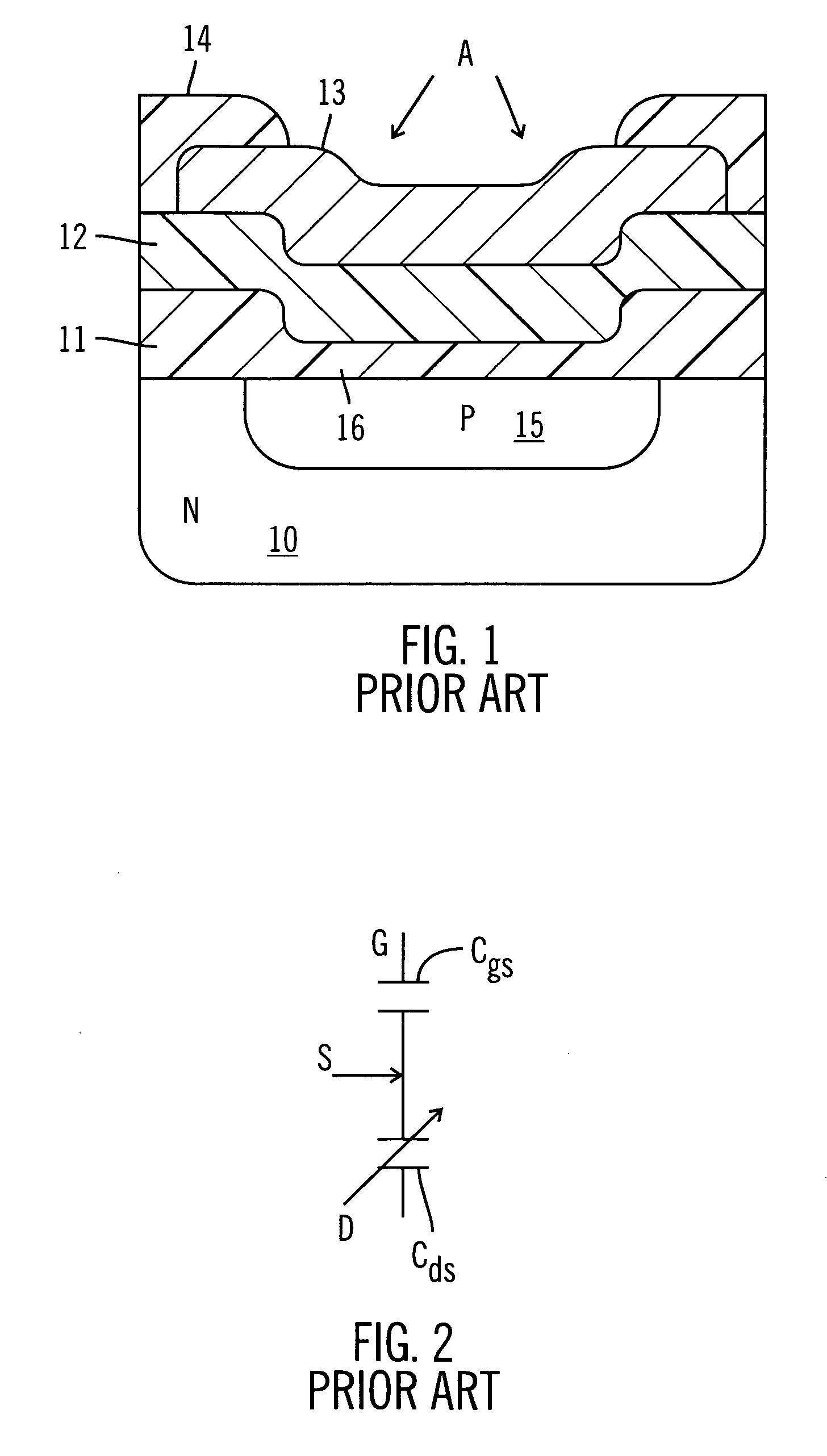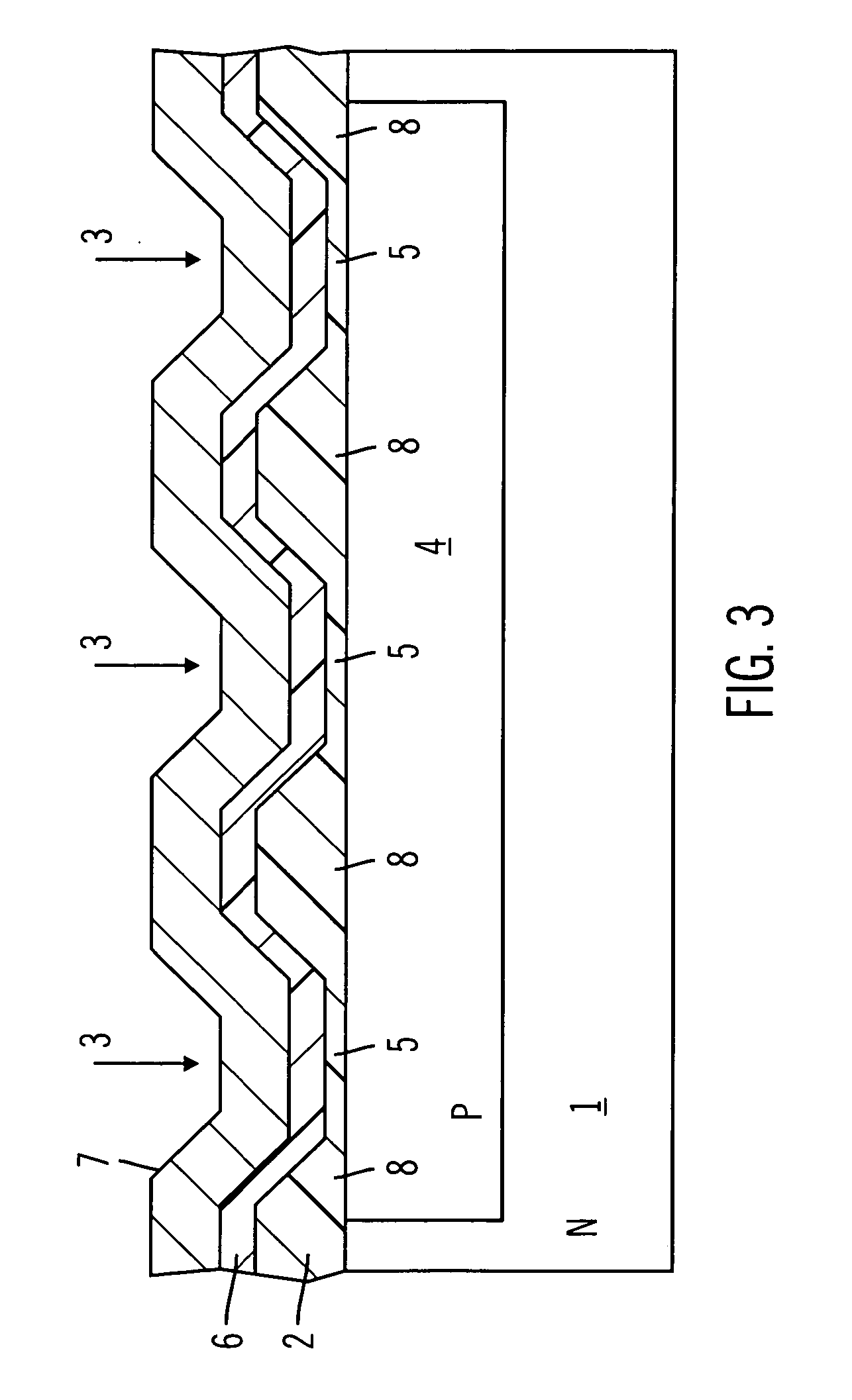Process for manufacturing MOS semiconductor device having inactive zone with alternating thickness silicon oxide layer
- Summary
- Abstract
- Description
- Claims
- Application Information
AI Technical Summary
Benefits of technology
Problems solved by technology
Method used
Image
Examples
Embodiment Construction
[0023] Preferred embodiments of the present invention will be described in detail hereinbelow with reference to the attached drawings.
[0024] FIG. 3 shows an inactive zone of a MOS semiconductor device according to a preferred embodiment of the present invention. Such inactive zone, which is destined to become a gate-pad or a gate-bus for the output or the input of the signals, includes an N-type semiconductor substrate having in turn an N-type epitaxial layer 1 which is connected to the drain terminal. A deposition of a field oxide layer 2 (for example with a thickness of 10K angstroms) occurs over a top surface of the epitaxial layer 1, which successively, after appropriate masking, is attached and removed in certain zones 3.
[0025] Under the zones 3, P-type semiconductor wells are formed using a P-type dopant implant and, after a further thermal diffusion step to allow merging of the wells, one P-type region 4 is formed which is connected with the source terminal of the device. Suc...
PUM
 Login to View More
Login to View More Abstract
Description
Claims
Application Information
 Login to View More
Login to View More - R&D
- Intellectual Property
- Life Sciences
- Materials
- Tech Scout
- Unparalleled Data Quality
- Higher Quality Content
- 60% Fewer Hallucinations
Browse by: Latest US Patents, China's latest patents, Technical Efficacy Thesaurus, Application Domain, Technology Topic, Popular Technical Reports.
© 2025 PatSnap. All rights reserved.Legal|Privacy policy|Modern Slavery Act Transparency Statement|Sitemap|About US| Contact US: help@patsnap.com



